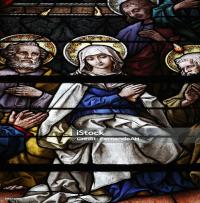
The liturgy for Pentecost Sunday provides different insights into the Third Person of the Trinity. The first reading from Acts gives an account of the coming of the Spirit, using powerful imagery like tongues of fire and rushing wind. We see the effect on the apostles, who rushed out to preach about Jesus to the crowds, gathered from many foreign lands for the festival. That same Spirit would guide the early church and direct Paul’s mission to the gentiles. The sequence describes the characteristics of the Holy Spirit as light, consoler, healer and bringer of gifts. When the Spirit is present there is generally a gentleness and lightness, encouraging movement without coercion. John, in his Last Supper discourses, describes the relationship within the Trinity: the Son carries out the work of the Father and the Spirit bears witness to him.
Pentecost unites the Old and New Testaments. The celebration of the festival recalled the appearance of God at Sinai about a month and a half after Passover, when he gave the Covenant to the people of Israel (Ex. 19:1) and they became his people. This was accompanied by smoke and thunder, symbolism similar to that of Acts. Now, however, there is a new Covenant and God’s people are no longer just the Jews but gentiles as well, united not by the Law but by faith in Jesus Christ. The community aspect must be stressed also; we are all part of the Body of Christ and find him in one another.